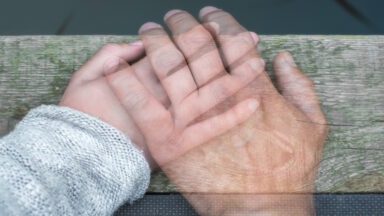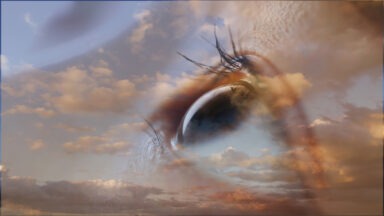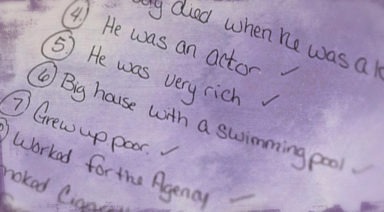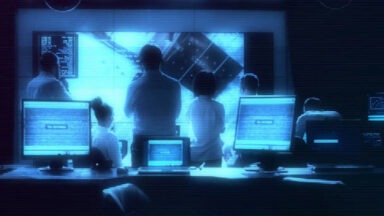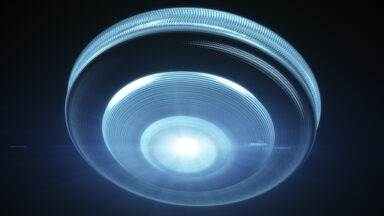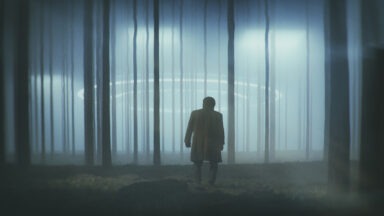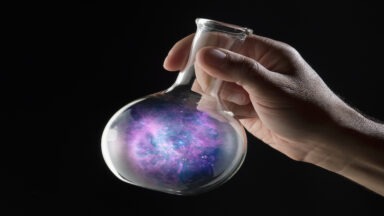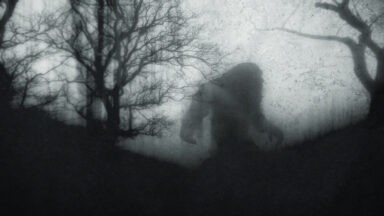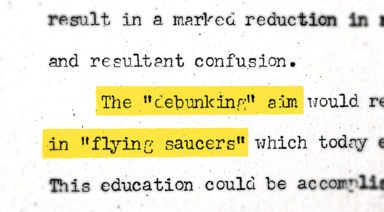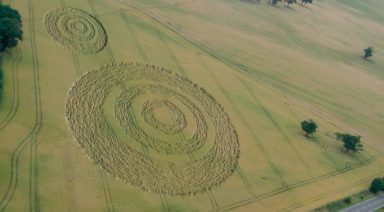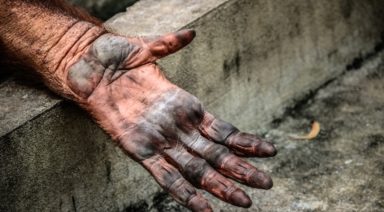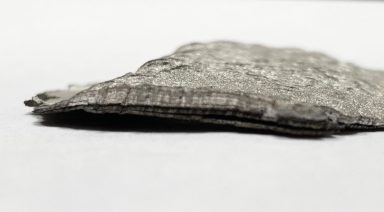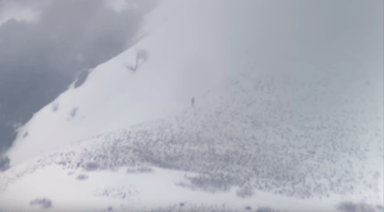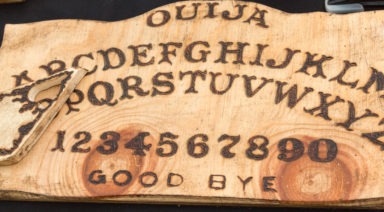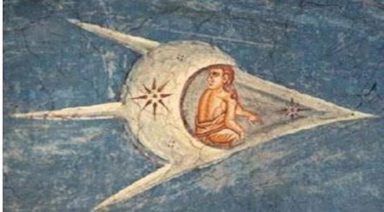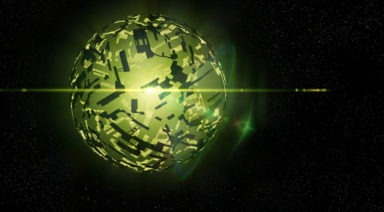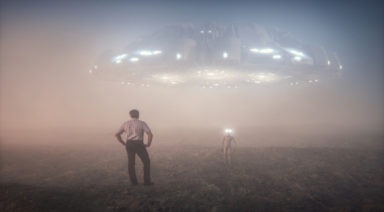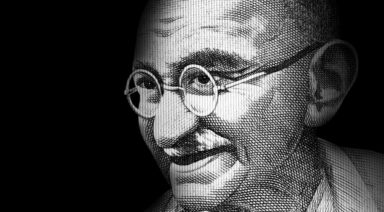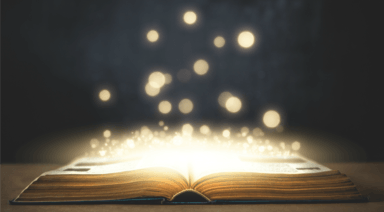The Fascinating History Behind the Ouija Board
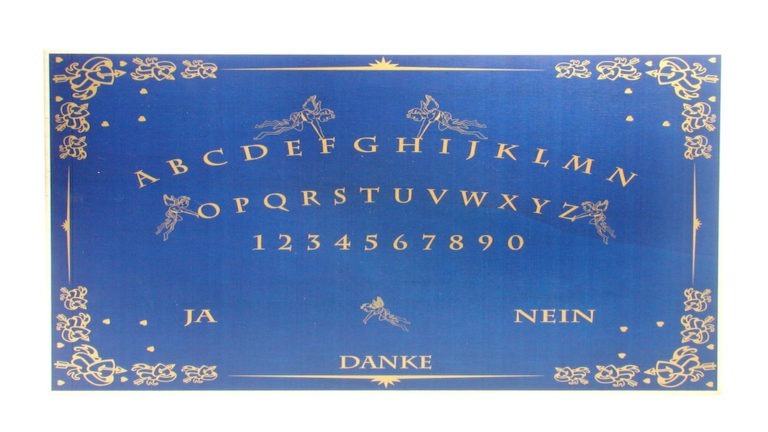
Those in tune with the occult likely think it strange to find such a tool as the Ouija Board shelved among sets of board games at the local toy store. Even though it has come to be regarded as a kitschy party game, thousands have reported “eerie” communications with a world beyond the veil of the physical plane. While some call the Ouija Board a game, others swear it is nothing to be trifled with.
For some, the board is an introduction into the ancient art of divination; for others, it is but one more party game to pull out around Halloween. Whether one believes in its mystical qualities, the Ouija Board has a fascinating history. It is a relic that predates horror films, when the spiritually inquisitive were venturing out and looking for a way to commune with loved ones who had passed on.
The Birth of Modern Spiritualism
Historians point to 1848 as the birth of modern spiritualism, when the Fox sisters of Hydesville, New York, began communicating with spirits through a series of knocking sounds. Even though it was later found that the sisters had staged the whole interaction, their alleged ability to bridge the gap between the physical and the spirit world started the ball rolling. Interest in the occult continued to grow so that many were identifying themselves as spiritualists.
Spiritualists believed and taught that the departed would become wiser and continue to mature in the spirit realm — and that some of them would go on to become guides and teachers for those who learned to communicate with them. Mediums were called in to lead seances, and people began using automatic writing to commune with the dead.
The tremendous loss of life and trauma in the American Civil War served to keep spiritualism alive, with family and friends desperately trying to reconnect with soldiers who lost their lives on the battlefield.
By 1886, mediums were communicating with the dead through automatic handwriting, using a planchette — a paddle-shaped object that participants placed their fingers on, consisting of two wheels at its bottom two points and a pencil at its top point. When participants placed their fingers lightly on the planchette, the spirit would steer the device so that the pencil would spell out a message. This design, however, proved to be unwieldy, and it was difficult for participants to make out the message at the end of the session. So there was a need for a better device.
Eventually, a solution came about (though its inventor is unknown): The planchette would stay, except that it would come to be used on something known as a “talking board,” a board with the alphabet and numbers one through ten written out on it. Much like automatic handwriting, those involved in the seance placed their fingers on the planchette, and the planchette move around, resting on various letters or numbers until it spelled out a message.
William Fuld’s Influence
The Ouija Board changed hands numerous times before it became an international success. Elijah Bond filed the first patent on the board, but eventually handed it over to William H. A. Maupin and Charles W. Kennard at the Kennard Novelty Company, in 1890.
When Kennard was dismissed from his own company in 1891 for unknown reasons, a man named William Fuld took the reins as the company supervisor. Within a year, the company changed its name to the Ouija Novelty Company and Fuld filed for a patent on talking boards. Under him, business boomed and the company rose to meet an ever-growing demand for Ouija Boards.
Soon Fuld ventured off and created his own company with his brother. The pair leased the name “Ouija” from the Ouija Novelty Company, but years later their partnership went south. Fuld became the sole proprietor of the company, renaming it William Fuld Manufacturing Company.
Though Fuld was not the inventor of the Ouija Board, he’s often been given credit for doing so. Wide publicity in the 1920s only served to further the spread of this misinformation — as well as branding the back of the board itself with the words “Inventor” and “Original Ouija Board.”
A successful businessman, Fuld claimed to have made three million dollars in profit by 1920. When he met an untimely death in 1927, after falling from a three-story building, his children inherited the company and ran it successfully until 1966, when they sold it to Parker Brothers.
The History Behind the Ouija Board’s Name
There are two conflicting stories of how the Ouija Board got its name. The first says that the board named itself. Elijah Bond, one of the first investors of the board, was using it with his family when they asked for its name. The board apparently spelled out O-U-I-J-A. While many people have interpreted the name to be a combination of both French and German words for “yes,” the family asked the board what its name meant, and it told them, “Good luck.”
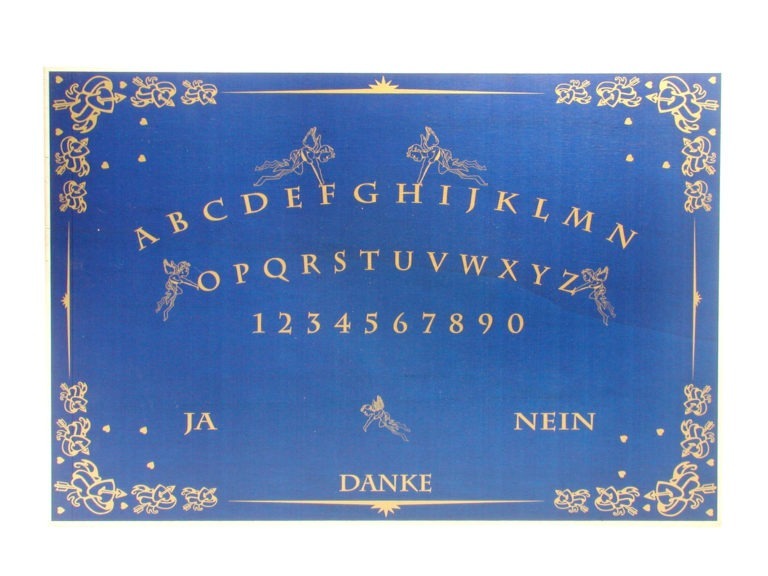
A German Ouija Board
The second explanation is that either the spirits or one of the participants of that seance misspelled the name “Ouida,” the pen name of a writer whom Bond’s sister-in-law admired. During the seance, it’s said that she bore a locket with the picture of the writer nestled inside of it, beneath the inscription, “Ouida.”
Either way, the name stuck and the board went on to be manufactured under it.
A Link to the Subconscious Mind
Countless Ouija Board users swear by its otherworldly abilities. They report new insights into their lives, answers to puzzling questions, contact with unseen beings, and roadmaps of their future.
While the board certainly has had critics challenge its validity for more than a century, scientists are beginning to admit that it may actually be a practical tool — but for communing with the subconscious, rather than with the spirit world.
The Smithsonian attributes the board’s seemingly mysterious methodology to the “ideomoter” effect — physical movement made unconsciously.
Since the days of Freud, psychologists have argued that the subconscious contains much more useful information than can be accessed with the conscious mind alone. Taking this idea to task in more recent years, researchers investigated whether the Ouija Board could actually be used to tap into the subconscious.
In 2011, psychology researchers Ron Rensink, Hélène Gauchou, and Sidney Fels, teamed up to learn more about the enigmatic Ouija board. The trio set up an experiment in which two people sat down at a Ouija Board, with one of them blindfolded and both of them lightly resting their hands on the planchette. When the researcher posed a question, the planchette began to move about the board.
Without alerting the blindfolded participant to what was happening, the other participant removed his/her hands and allowed the first to continue using the board. The blindfolded participant answered the questions 65 percent accurately, 15 percent more accurately than guessing without the board. The researchers concluded that this kind of success points to the role of the subconscious in providing answers that the conscious mind is unaware of.
Based on the team’s experiment, Dr. Fels explained, “You do much better with the Ouija on questions that you really don’t think you know, but actually something inside you does know and the Ouija can help you answer above chance.”
While researchers are excited to use the Ouija Board as a tool to prod further into the subconscious, most who take their turn with the game are convinced that it opens a portal into the spirit world. Regardless of how it works, through spirit or subconscious, the Ouija Board seemingly remains as enigmatic and mysterious as the day it was introduced to the public.
And it seems both researchers and believers agree on one point — the board is definitely a mode of communication that makes good on its promise to answer strange questions and provide insight into a realm humans still haven’t been able to thoroughly or reliably explore.
But for those who truly believe that the Ouija Board is connecting with the spiritual world, the findings and claims of researchers are merely suppositions attempting to explain the unknown. After all, where is the dividing line between the subconscious mind and the universal mind, and who is to say which is coming through as the planchette moves across the face of the board?
5 Signs That a Deceased Loved One Is With You
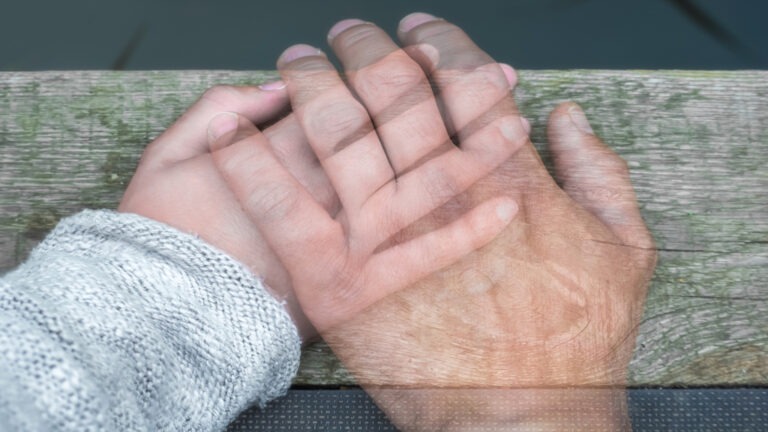
Are there times when you feel that someone who has passed away is still close to you? The presence of a deceased loved one can be felt in a real way through subtle signs, emotional sensations or physical manifestations. In this article we explore how to know if the spirit of a family member is with you, what types of signs may appear, and why you shouldn’t ignore them.
Table of Contents
- Spiritual Signs That a Deceased Loved One Is Nearby
- How to Interpret Messages From the Spiritual World?
- What to Do When You Feel the Presence of a Deceased Loved One?
- When Does a Departed Soul Want to Give You a Message?
- Is It Possible to Contact a Deceased Loved One?
- Intuition as a Channel to Receive Messages From the Beyond
Spiritual Signs That a Deceased Loved One Is Nearby
Although we can no longer see or hear them as before, the emotional links with our deceased loved ones remain active at an energetic and spiritual level. It is common that their presence is manifested through signs that, if we learn to recognize them, can bring comfort and confirm that they are still close, accompanying our processes and taking care of us from another dimension.
These signs are not always obvious. That is why it is important to pay attention to the small details of everyday life, especially if you are going through an emotionally significant stage or feel that someone who has passed away needs to give you a message. Here are some of the most frequent manifestations so you can understand how to tell if a deceased loved one is with you.
- Vivid dreams and dream messages: One of the most frequent ways deceased loved ones communicate is through the dream world. These dreams are not only intensely real, but also emotionally meaningful: you can see their faces clearly, feel their energy, and remember precisely what they conveyed to you. It is not a simple evocation of memory, but a spiritual encounter that often has a clear purpose: to comfort you, to guide you, or to convey a message you need to hear.
- Interference or electrical phenomena: Spirits have the ability to interact with energy fields, so their presence is often manifested by lights that flicker, appliances that turn on by themselves, or radios that play songs with personal meaning. If something like this happens just when you think of that person, it’s probably not a coincidence.
- Aromas that evoke specific memories: Sometimes, for no apparent reason, you may perceive a smell that immediately transports you to the presence of someone who is no longer physically present. Your mother’s distinctive perfume, the aroma of freshly brewed coffee that your grandfather used to make, or the smell of flowers given to you by a loved one may appear suddenly and without logical explanation. These sensory experiences are one of the most direct and recognizable ways in which spirits make their closeness felt.
- Presence of symbols, animals or repetitive elements: Deceased loved ones often use elements loaded with meaning to send you signals. It can be butterflies, feathers, coins, songs or numbers that are repeated frequently. If these symbols appear insistently in emotional moments or when you think of that person, it is very likely that they are trying to establish a connection from the spiritual plane.
- Subtle but obvious physical sensations: Some people report feeling a gentle caress, a sudden shiver, a light pressure on the shoulder, or the distinct sensation that someone is beside them, even though no one is present. These manifestations usually occur when someone deceased needs to give you a message or simply wants to make you feel their company.
How to Interpret Messages From the Spiritual World?
Signs from the spiritual world do not always manifest themselves in a direct or obvious way. It is not a matter of looking for a literal message, but of observing how these symbols present themselves and what connection they have with your emotional and spiritual life. Each person has a different sensitivity, so it is important to develop a more conscious perception of what you feel when these signs appear.
A good way to interpret these messages is to pay attention to what is going on inside you at the moment you perceive the sign. Does it generate peace, excitement, nostalgia or clarity? The emotional charge that accompanies a signal can be as relevant as the event itself. It’s not just about what you see or hear, but what that experience awakens internally, and how it relates to your personal process.
It is also important to note repetition. When a signal occurs more than once, in different contexts, it is probably not a coincidence. Sometimes messages are not immediately understood, but reveal themselves over time. Keeping an open attitude, without forcing interpretations, allows you to connect more authentically with what the spiritual world is trying to show you.
What to Do When You Feel the Presence of a Deceased Loved One?
Feeling the presence of a deceased loved one is a real and meaningful experience that can generate different emotions, from peace and comfort to bewilderment or uncertainty. Far from being something that should frighten you, it is a manifestation of the bond that continues to exist beyond the physical plane. Acknowledging that closeness with openness and calmness allows the experience to integrate naturally into your life, without fear or confusion.
You can speak out loud or in your mind, express what you feel, thank them for their closeness or simply send thoughts of love. You don’t need to do complex rituals: a sincere gesture of emotional connection already creates a bridge between your energy and theirs. This inner communication is as valid as any other form of spiritual contact.
It is also helpful to keep a record of these moments. Writing down what you felt, when it happened, if there were any physical or emotional signs, can help you identify patterns and better understand the purpose of the presence. Over time, these experiences can become a valuable guide for your personal and spiritual process.
When Does a Departed Soul Want to Give You a Message?
There are specific times when deceased loved ones try to communicate more clearly. This often occurs when you are going through a major change, facing a major decision or in need of emotional support. In such cases, the signals may intensify and become more obvious, as if something is insisting on getting your attention.
It can also happen that the message arrives shortly after the death, when the emotional bond is still very active. In that period, it is common to receive unexpected dreams, symbols or emotions that bring a sense of direct connection. The message is not always verbal or specific; sometimes it is simply the certainty that they are well, that they are still present or that they are accompanying you on your journey.
It is important not to force the message to be received. Although many people wonder how to know if a deceased person wants to tell you something, the answer does not always come immediately. Maintaining a receptive attitude, but without anxiety, is the best way to facilitate communication. If the message needs to get through, it will do so at the right time and in the clearest way for you.
Is It Possible to Contact a Deceased Loved One?
There are different ways to contact a deceased loved one. Some people manage to establish this type of connection spontaneously, through dreams, signs or sensations that arise at specific moments. In other cases, they resort to more structured practices such as deep meditation, intuitive writing or symbolic rituals that favor the energetic link with the spiritual plane.
One of the best known ways to contact deceased persons is mediumship. Mediums are people with the ability to perceive subtle energies and act as a channel of communication between this plane and the spiritual world. Through specific sessions, they can transmit messages, emotions or images from loved ones who are no longer physically present, providing guidance or comfort to those who consult them.
There are also other tools such as the use of oracle cards, working with pendulums or connecting with spiritual guides who act as intermediaries. Although each experience is unique, the key element is always emotional openness and the sincere intention to establish that contact. It is not about forcing communication, but allowing it to occur naturally and respectfully.
In the series Channeling: A Bridge to the Beyond, available on Gaia, various experts and channelers explore how it is possible to connect with unseen dimensions and receive messages from higher consciousness. Through real experiences, quantum theories and spiritual practices, this series offers an in-depth look at methods for contacting the beyond and better understanding the link between worlds.
Intuition as a Channel to Receive Messages From the Beyond
Intuition is one of the most powerful tools for perceiving messages from the spiritual world. It is that inner knowledge that arises without logical reasoning, but with a clear and profound certainty. Many times, when a deceased loved one tries to communicate, intuition is the first to pick up that signal: a sudden idea, a phrase that comes to mind or an unexplained physical sensation.
Learning to trust this subtle perception is fundamental to strengthen the link with the spiritual plane. Intuition does not need concrete proof to be valid, because it manifests as an inner truth that is simply known. Often, the most intuitive people perceive signs even before they materialize physically, proving that communication with the beyond is not always visible, but perceptible.
Cultivating intuition is a process that can be developed with practice and mindfulness. Meditation, inner silence, connecting with nature and recording personal experiences are effective ways to strengthen this channel. The more you learn to listen to your inner voice, the easier it will be to recognize when a message is coming from your own mind and when it is coming from another dimension.


